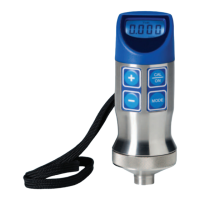
Do you have a question about the StressTel PocketMIKE and is the answer not in the manual?
| Brand | StressTel |
|---|---|
| Model | PocketMIKE |
| Category | Measuring Instruments |
| Language | English |
Proper use requires correct equipment, application knowledge, and operator training.
Operators must understand soundwave theory, material velocity, wave behavior, and sound beam coverage.
Information is limited to the sound beam; inferring outside requires caution.
Part geometry and surfaces can affect readings and require careful examination.
Calibrating the instrument's sound velocity is critical for minimizing thickness measurement errors.
Sound velocities vary; calibrate on reference blocks for best results.
Probe zeroing removes transducer time-of-flight for accurate thickness calculation.
Temperature variations affect sound velocity and calibration; calibrate on-site.
Select transducers in good condition with an appropriate measuring range.
Proper and consistent use of couplants is essential for accurate measurements.
Understand "doubling" where readings are twice or thrice the actual thickness.
Instruments use the pulse-echo principle, transmitting and receiving sound pulses.
Instructions for installing an AA alkaline battery into the PocketMIKE instrument.
Guide on how to power the PocketMIKE instrument on and off.
Explanation of the functions of each key on the PocketMIKE keypad.
Description of icons and text displayed on the PocketMIKE screen.
Overview of the different display screen modes available on the PocketMIKE.
Describes the functions of the CAL/ON and MODE keys.
Explains the +/- keys and combined key press functions.
Indicators for Thickness, Thickness Calibration, and Velocity Calibration modes.
Indicators for backlight status, low battery, and measurement units (inch/mm).
Indicators for SAFE mode, lockout disabled, overheating, failures, and active calibration.
Overview of the three general display screen modes: Measurement, Calibration, and Backlight Adjustment.
How to adjust the instrument's display brightness and backlight settings.
Procedures for calibrating thickness and material sound velocity.
Configuring measurement units, resolution, and display orientation.
Instructions for replacing the probe and activating control lockout (SAFE mode).
How to set the backlight to On, OFF, or Auto for optimal visibility.
Importance of probe condition and selecting appropriate calibration standards.
Detailed step-by-step guide for performing thickness calibration.
Steps to initiate and complete velocity calibration by inputting material velocity.
Notes on velocity calibration, including the absence of a thickness standard requirement.
Configuring measurement units (inch/mm) and display resolution levels.
How to flip the display orientation for probe-up or probe-down use.
Step-by-step guide for replacing the instrument's probe assembly.
Emphasizes the need to recalibrate after replacing the probe.
How to activate SAFE mode to lock instrument controls.
Instructions on how to physically rotate the display housing.
Information on operating temperature limits and the "Hot" warning.
Essential steps before measuring, including calibration and surface prep.
Detailed step-by-step guide for performing thickness measurements.
Proper couplant application and transducer placement for accurate readings.
Note on using only approved couplants to avoid instrument damage.
Technical specifications of the PocketMIKE instrument, including probe, range, and temperature.
Declaration of the product's compliance with relevant EC directives.
Details on battery life, instrument weight, dimensions, and environmental rating.
Factors related to material consistency that affect measurement accuracy.
How internal flaws and surface condition affect thickness readings.
Considerations for measuring thickness on curved surfaces.
How to orient the probe's crosstalk barrier on curved surfaces like tubes.
Solutions for when the unit does not turn on or measurements are unstable.
Solutions for obvious measurement errors and problems obtaining probe coupling.
Details of the manufacturer's warranty for instruments and transducers.
Specific limitations and conditions under which the warranty does not apply.
Information needed when sending the unit for repair or recertification.
Addresses for sending the unit to the service department in the US and Germany.
Recommendations for packaging the unit safely for transit.
Information on the warranty provided for repairs performed by the service department.
Table of typical sound velocities for common materials.
Note that typical values may not precisely match actual material velocity.
